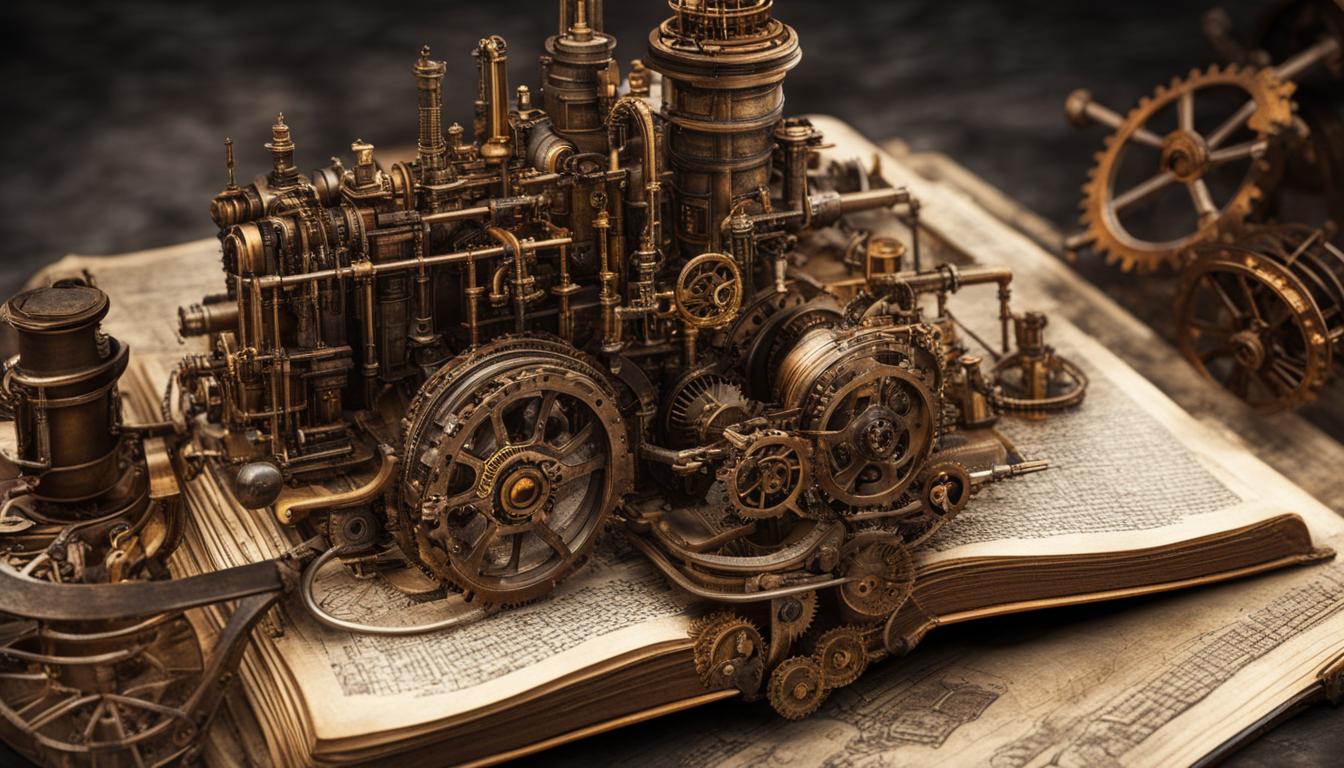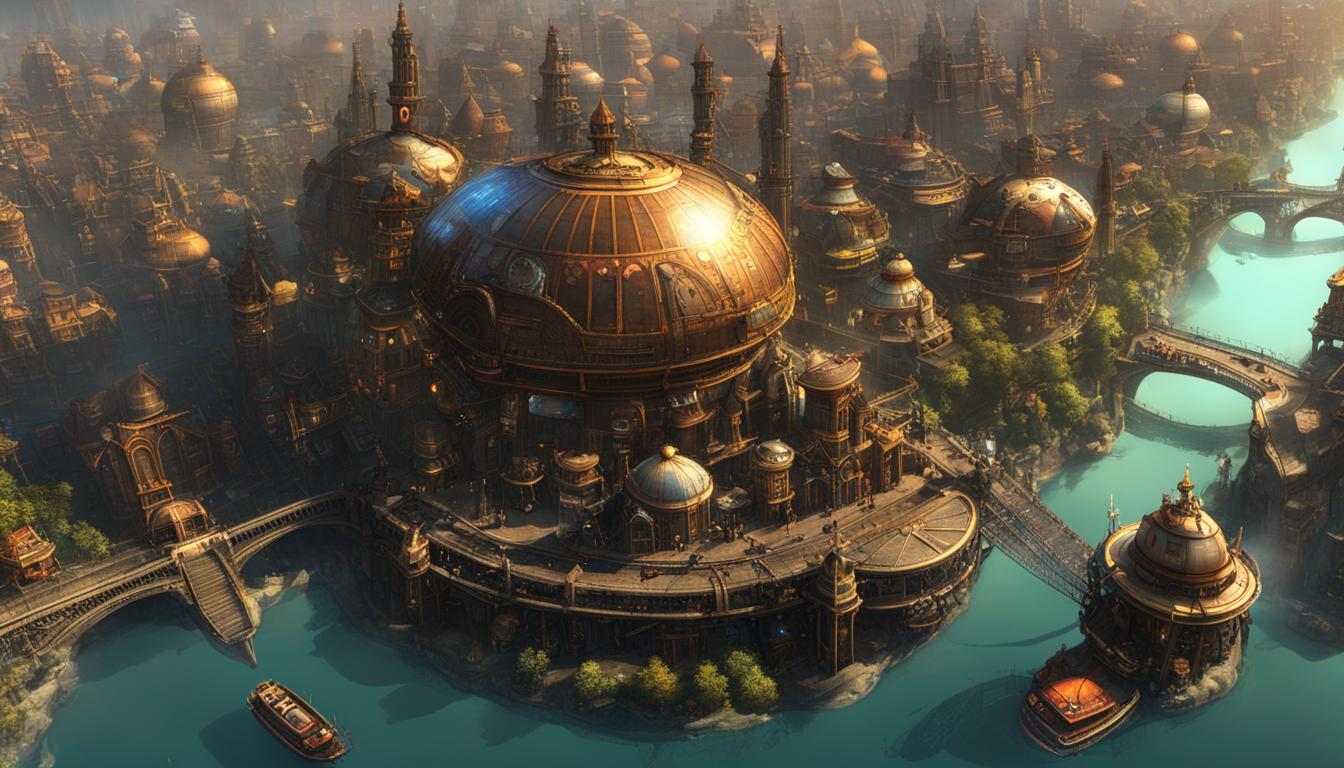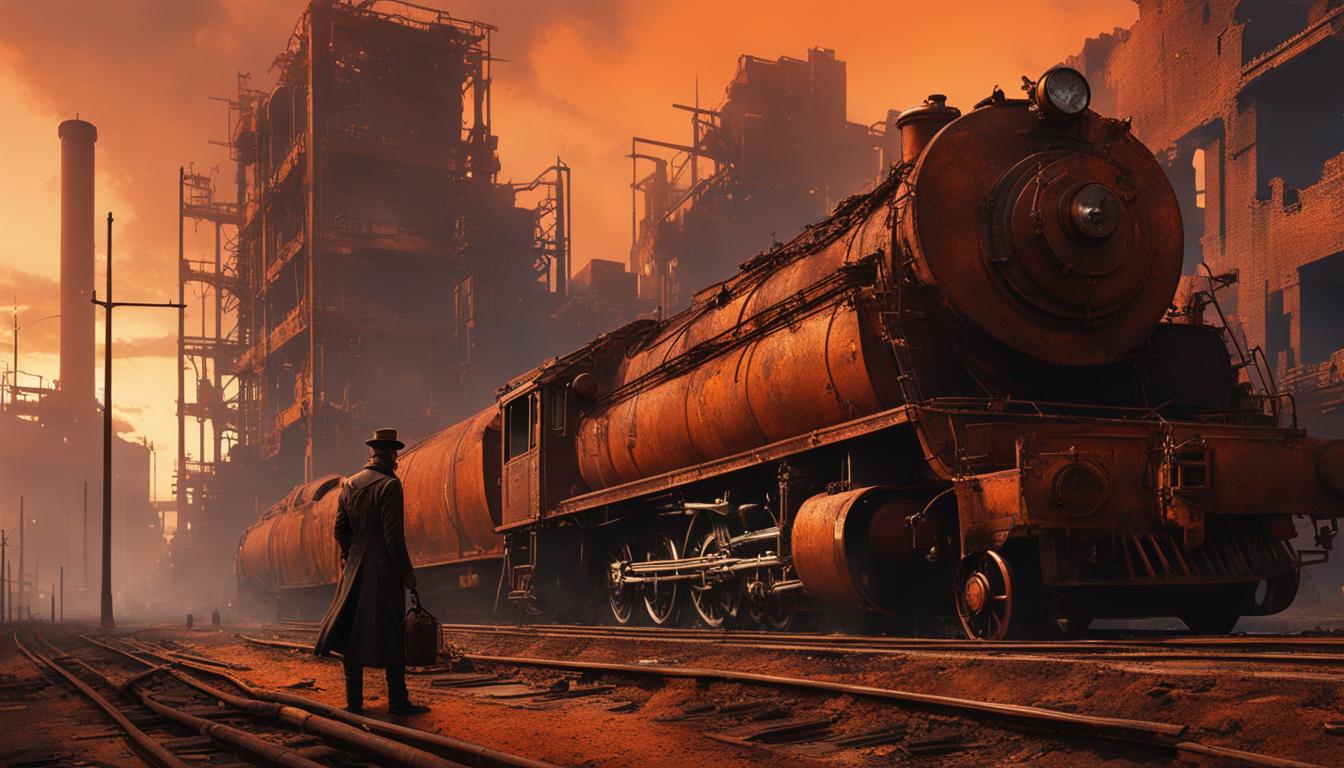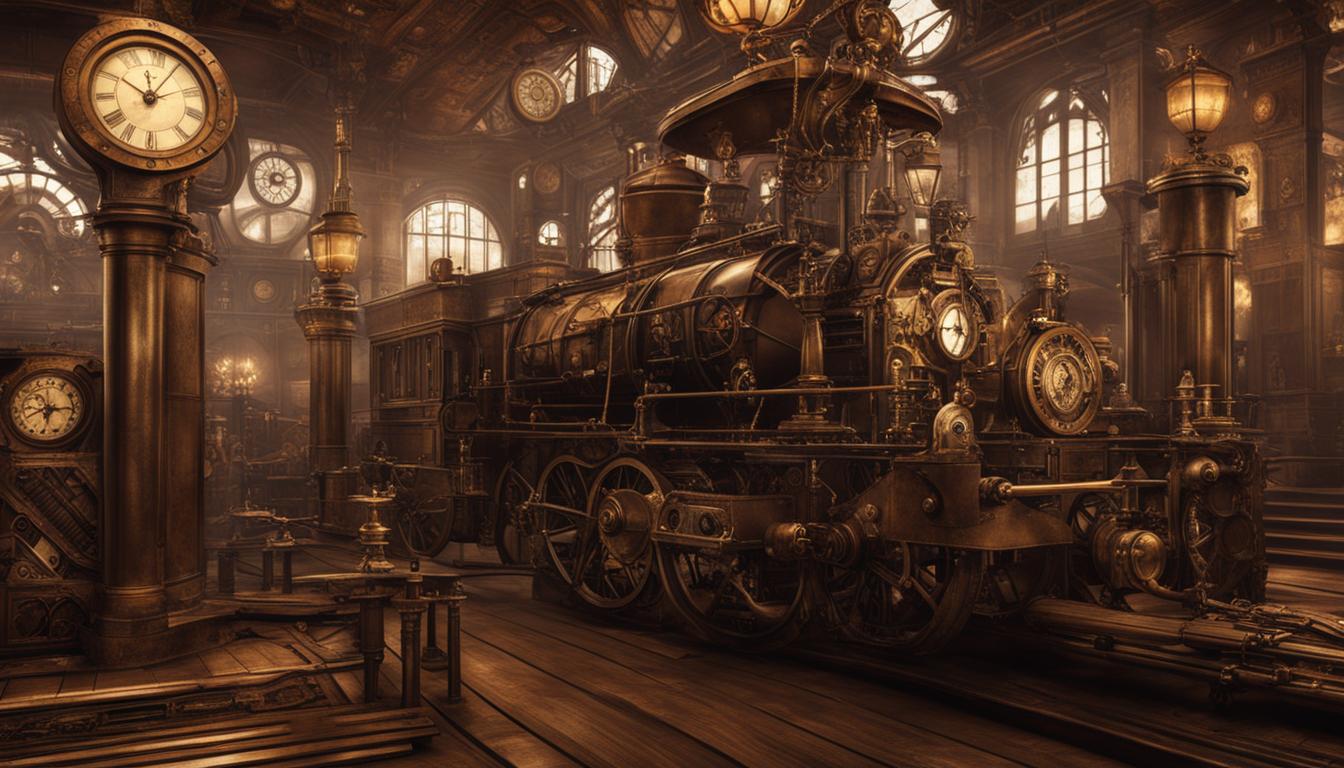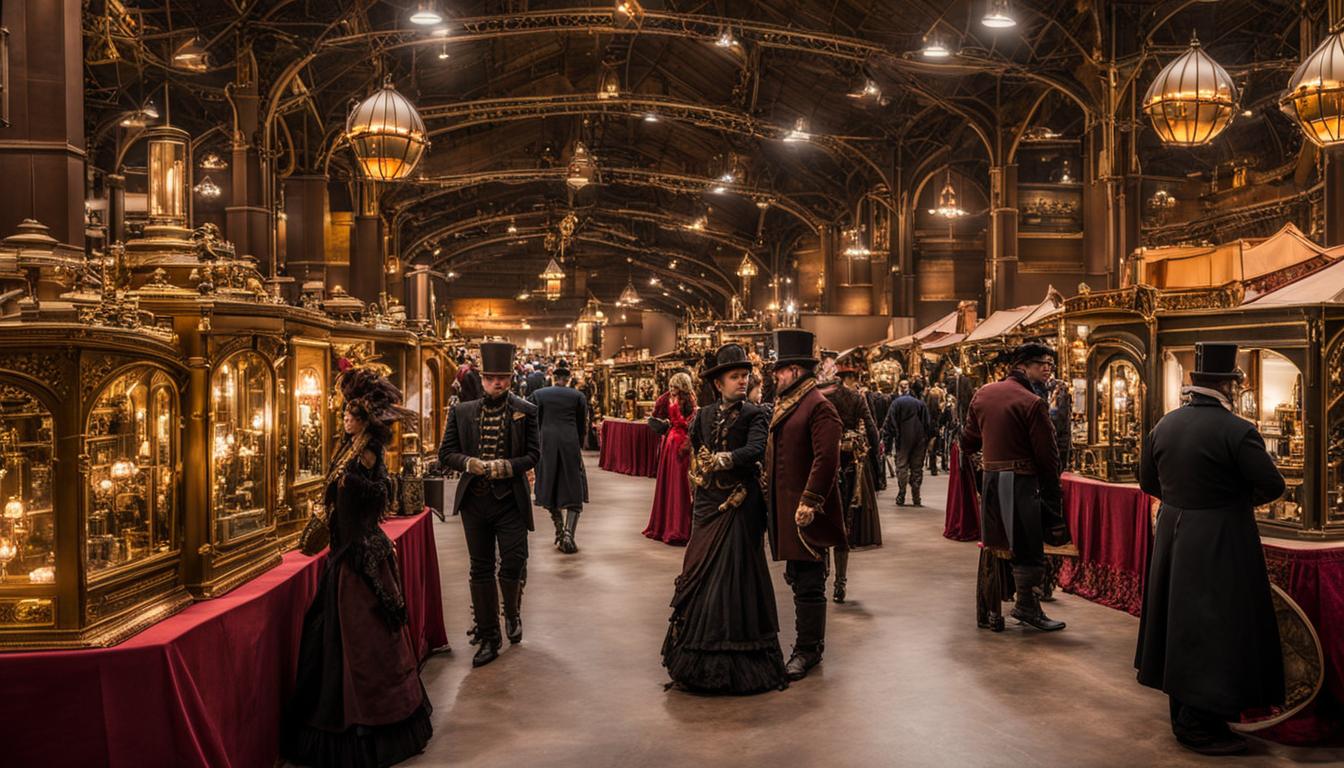Steampunk, a captivating subgenre of science fiction, has taken the literary world by storm. With its unique blend of Victorian aesthetics and futuristic ideas, it has redefined genres and reshaped the way we approach storytelling. From alternative historical narratives to the incorporation of steam-powered machinery, steampunk literature brings a fresh perspective to the literary landscape.
But what sets steampunk apart? How has it influenced not only literature but also art, fashion, and film? In this article, we delve into the impact of steampunk on literature, uncovering its genre-blending nature and its evolution as a literary innovator. We also explore how steampunk has influenced fiction as a whole, leading to the emergence of subgenres and inspiring creators in various fields.
Key Takeaways:
- Steampunk combines elements of the Victorian era with futuristic ideas in a captivating subgenre of science fiction.
- Steampunk challenges traditional genre classifications, reshaping literary norms and captivating readers.
- It blends genres such as science fiction, fantasy, historical fiction, and alternative history, appealing to a wide range of readers.
- Steampunk has had a significant influence on the broader fiction landscape, inspiring genre blending and leading to the emergence of subgenres.
- Steampunk’s impact extends beyond literature, also influencing design, fashion, and film.
Steampunk’s Unique Genre Mix
Steampunk literature stands out for its ability to blend genres in a captivating and innovative way. By combining elements of science fiction, fantasy, historical fiction, and alternative history, steampunk creates a genre mash-up that breaks traditional boundaries. It takes the technological advancements of the Industrial Revolution and intertwines them with the aesthetics and social dynamics of the Victorian era. This fusion of genres allows authors to craft stories that appeal to a wide range of readers and challenge literary norms.
Steampunk’s genre-blending nature has earned it the reputation of a genre changer. By crossing genres, steampunk literature offers a unique perspective on storytelling, encouraging authors and readers alike to explore new possibilities. The blending of science fiction and history, for example, allows for the creation of alternative narratives that reimagine the past with futuristic elements. This genre mix also introduces fantastical elements to historical settings, adding an extra layer of excitement and intrigue. Steampunk’s ability to seamlessly incorporate different genres offers a refreshing and unexpected reading experience.
As a result of its genre-bending nature, steampunk has had a significant impact on the way authors approach storytelling. It has inspired a new wave of experimentation and pushed the boundaries of traditional genre classifications. By showcasing the possibilities of genre blending, steampunk has opened doors for other authors to explore unconventional combinations and challenge the status quo. This ability to disrupt traditional genre boundaries is what truly sets steampunk literature apart and cements its place as a genre changer.
Table: Genres in Steampunk Literature
| Genres | Description |
|---|---|
| Science Fiction | Steampunk incorporates futuristic technology and scientific advancements, often reimagining the Industrial Revolution. |
| Fantasy | Steampunk introduces fantastical elements, such as magical artifacts or creatures, into historical settings. |
| Historical Fiction | Steampunk utilizes the aesthetics and social dynamics of the Victorian era, creating immersive historical narratives. |
| Alternative History | Steampunk explores “what if” scenarios, reimagining historical events with different outcomes. |
The unique genre mix of steampunk literature has undoubtedly left a lasting impact on the literary landscape. By defying traditional genre classifications and challenging literary norms, steampunk has paved the way for new storytelling possibilities. Its ability to seamlessly blend genres offers readers a fresh and captivating reading experience, while inspiring authors to think outside the box. Steampunk’s genre-bending nature continues to shape the future of literature, proving that innovation can arise from the blending of different storytelling traditions.
The Evolution of Steampunk as a Literary Innovator
Steampunk, with its imaginative blend of historical fiction and science fiction, has emerged as a literary innovator, reshaping the norms of storytelling in fascinating ways. This genre has redefined traditional approaches to both historical fiction and science fiction, introducing fantastical elements and alternative histories that captivate readers and push the boundaries of imagination.
At its core, steampunk challenges the conventional notions of genre classification, offering a fresh perspective that infuses new life into literature. By seamlessly combining elements from different genres, steampunk authors create narratives that defy traditional categorizations and appeal to a diverse range of readers. This genre-blending approach has revolutionized the literary landscape, attracting an ever-growing fan base and inspiring authors to think outside the box.
Steampunk’s evolution as a literary innovator has not only transformed the content of stories but also the way readers engage with them. Through its exploration of alternative worlds and reimagined pasts, steampunk invites readers to embark on thrilling adventures and experience literature in a whole new way. By reshaping the boundaries of storytelling, steampunk has opened up endless possibilities, encouraging authors to experiment with narrative structures and challenge established norms.
In summary, the genre evolution of steampunk has had a profound impact on literature, providing a fresh and exciting approach that defies traditional norms. Through its imaginative fusion of genres, steampunk has reshaped the way authors and readers alike think about storytelling, pushing the boundaries of imagination and prompting a reevaluation of what constitutes a captivating narrative.
| Steampunk’s Literary Innovations | Impact |
|---|---|
| Genre-blending | Challenges traditional genre classifications, attracts diverse readership |
| Alternative histories | Expands perspectives, pushes the boundaries of storytelling |
| Reimagined pasts | Invites readers to embark on thrilling adventures, reshapes engagement with literature |
| Experimental narratives | Promotes creativity, encourages authors to break established norms |
Steampunk’s Influence on Fiction
The impact of steampunk on fiction is undeniable. This unique genre has inspired authors to push the boundaries of storytelling, creating captivating narratives that blend elements of science fiction, fantasy, and alternative history. Steampunk’s influence can be seen in the emergence of new subgenres and spin-offs, such as gaslamp fantasy and clockpunk, which continue to captivate readers with their imaginative worlds and intricate plots.
One of the key ways that steampunk has influenced fiction is through its ability to blend genres seamlessly. By combining the technological advancements of the Industrial Revolution with the aesthetics and social dynamics of the Victorian era, steampunk authors have created a truly distinctive reading experience. This genre blending has inspired other authors to experiment with crossing genres, resulting in a more diverse and dynamic literary landscape.
Steampunk’s influence on fiction extends beyond its popularity as a genre. It has sparked a movement in visual arts, filmmaking, and fashion, inspiring a whole new generation of creatives to reimagine the possibilities of the past and future.
Furthermore, steampunk has had a significant impact on the design of fictional worlds. Its emphasis on physical realization and design practice has inspired designers to explore new ways of implementing technology and imagining future landscapes. Steampunk’s influence as a literary influencer is not limited to the pages of books; it extends into the realm of design and interaction, opening up new possibilities for innovation and creativity.
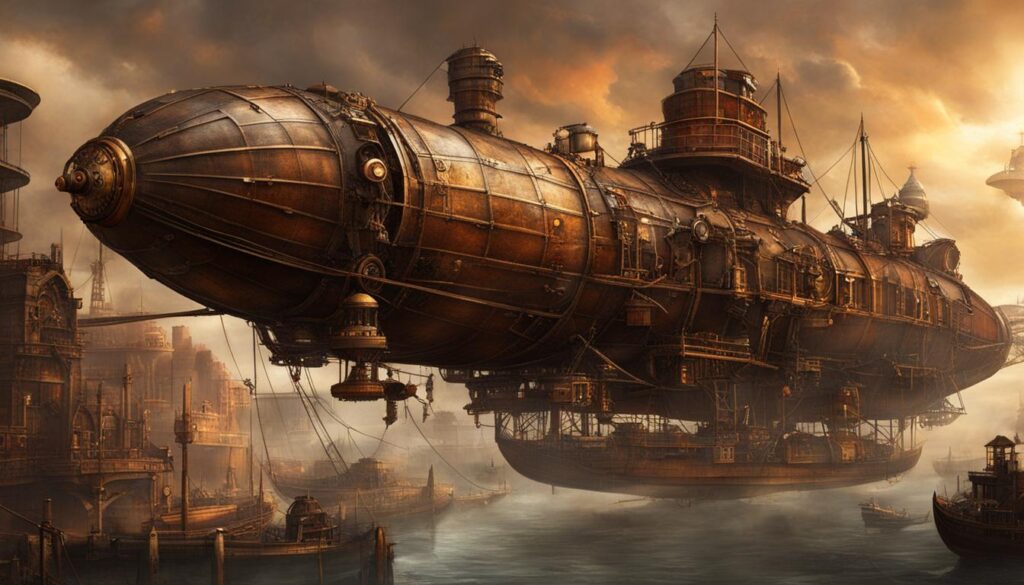
Table: Steampunk’s Influence on Fiction
| Impact | Description |
|---|---|
| Diverse Genres | Steampunk’s genre blending has led to the emergence of new subgenres and spin-offs, expanding the options available to readers. |
| Creative Inspiration | Steampunk has inspired visual artists, filmmakers, and fashion designers, leading to an expansion of the aesthetic movement beyond literature. |
| Design Innovation | Steampunk’s focus on physical realization and design practice has inspired designers to explore new ways of implementing technology and imagining future worlds. |
Steampunk as Design Fiction
Steampunk’s influence extends beyond the realm of literature to the world of design and interaction. Its unique emphasis on do-it-yourself (DIY) and appropriation has led to the development of design strategies and implications for human-computer interaction (HCI). In the study of Steampunk makers’ online practices, researchers have identified key concepts such as design fictions, DIY, and appropriation that are highly relevant to HCI and interaction design.
Steampunk’s design strategies revolve around the physical realization and design practice, inspiring designers to explore innovative ways of implementing technology and imagining future worlds. By embracing the aesthetics of steam-powered machinery, Victorian era fashion, and intricate clockwork mechanisms, Steampunk offers a fresh perspective on design that challenges conventional norms. This integration of design and Steampunk has opened up new possibilities for creativity and innovation in the field, pushing designers to think outside the box and reimagine the potential of technology.
“Steampunk design is a fusion of the old and the new, embracing the beauty of the Victorian era while incorporating futuristic elements. It encourages designers to experiment, tinker, and repurpose existing objects to create unique and functional pieces,” says renowned Steampunk artist and designer, Jayne P. Kensington.
Steampunk’s influence as a design fiction has not only sparked curiosity and inspiration but also paved the way for advancements in HCI and interaction design. The genre’s DIY ethos and unconventional approach to technology have challenged traditional design methods and fostered a spirit of innovation. As researchers continue to delve into the world of Steampunk and its impact on design, the possibilities for creating immersive and engaging user experiences are vast.
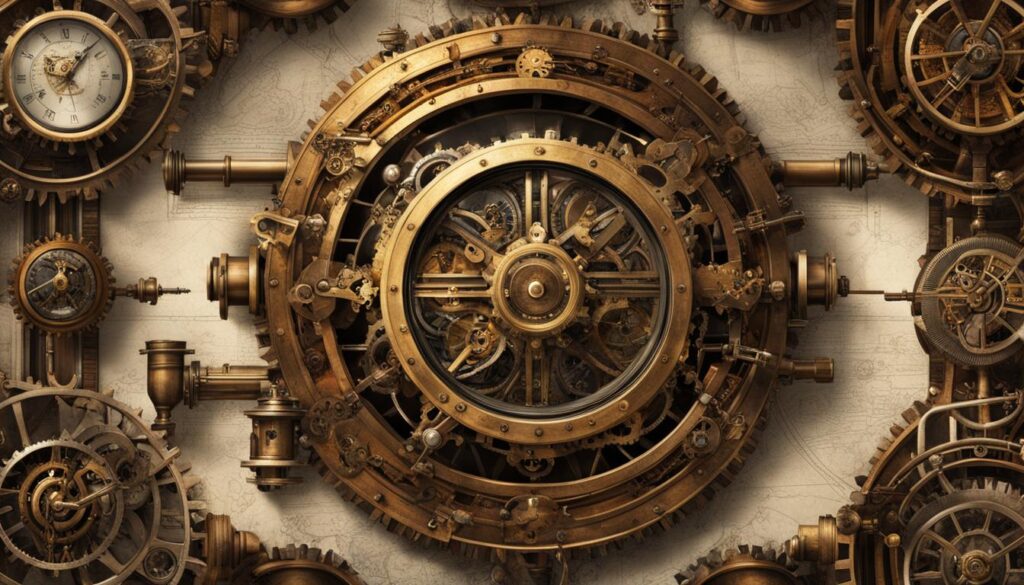
The Intersection of Steampunk and Design:
| Design Elements | Steampunk Influence |
|---|---|
| Technology | Embracing the aesthetics of steam-powered machinery and intricate clockwork mechanisms. |
| Fashion | Incorporating Victorian era fashion and distinctive Steampunk attire. |
| DIY Culture | Inspiring designers to experiment, tinker, and repurpose existing objects to create unique and functional pieces. |
| Alternative History | Encouraging the exploration of alternate timelines and reimagined worlds. |
| Interaction Design | Pushing the boundaries of traditional design methods and fostering innovation in HCI. |
In summary, Steampunk’s influence as a design fiction has brought forth new design strategies and implications for HCI. By blending the aesthetics of the Victorian era with futuristic elements, Steampunk has inspired designers to challenge traditional norms and rethink the possibilities of technology. As this intersection continues to evolve, the impact of Steampunk on design and interaction will likely shape the future of HCI, fostering creativity, and innovation.
Conclusion
As the gears of time continue to turn, one cannot deny the profound impact that steampunk has had on the world of literature. This captivating subgenre has effortlessly blended genres, redefining the boundaries of storytelling and reshaping our literary norms. Steampunk’s unique mix of science fiction, fantasy, historical fiction, and alternative history has captivated readers from all walks of life, transcending traditional genre classifications with its mesmerizing tales.
But the influence of steampunk extends far beyond the written word. It has sparked a movement that has permeated through art, fashion, film, and design. The ingenious fusion of Victorian aesthetics and futuristic ideas has inspired a wave of creativity, encouraging authors to experiment and break free from the shackles of convention. Steampunk’s success has even given birth to new subgenres and spin-offs, expanding the boundaries of fiction and providing fresh perspectives for both authors and readers alike.
From clockwork contraptions to airships traversing the skies, steampunk has ignited our imaginations and transported us to awe-inspiring worlds. It has challenged us to question the status quo, inviting us to reimagine the possibilities of the past and explore unforeseen futures. Steampunk’s impact on literature, design, and culture is undeniable, leaving an indelible mark that will continue to enthrall and inspire generations to come.
FAQ
What is steampunk?
Steampunk is a subgenre of science fiction that combines elements of the Victorian era with futuristic ideas.
How has steampunk influenced literature?
Steampunk has reshaped genres, challenged norms, and inspired innovation in storytelling.
What genres does steampunk blend?
Steampunk blends elements of science fiction, fantasy, historical fiction, and alternative history.
How has steampunk influenced other forms of art?
Steampunk has inspired visual artists, filmmakers, and fashion designers, expanding the aesthetic movement beyond literature.
What impact has steampunk had on design and interaction?
Steampunk has provided design strategies and implications for Human-Computer Interaction (HCI), inspiring new approaches to technology implementation and future world imagining.
What is the legacy of steampunk in literature?
Steampunk has redefined genres, pushed boundaries, and captivated readers with its imaginative worlds and narratives.

